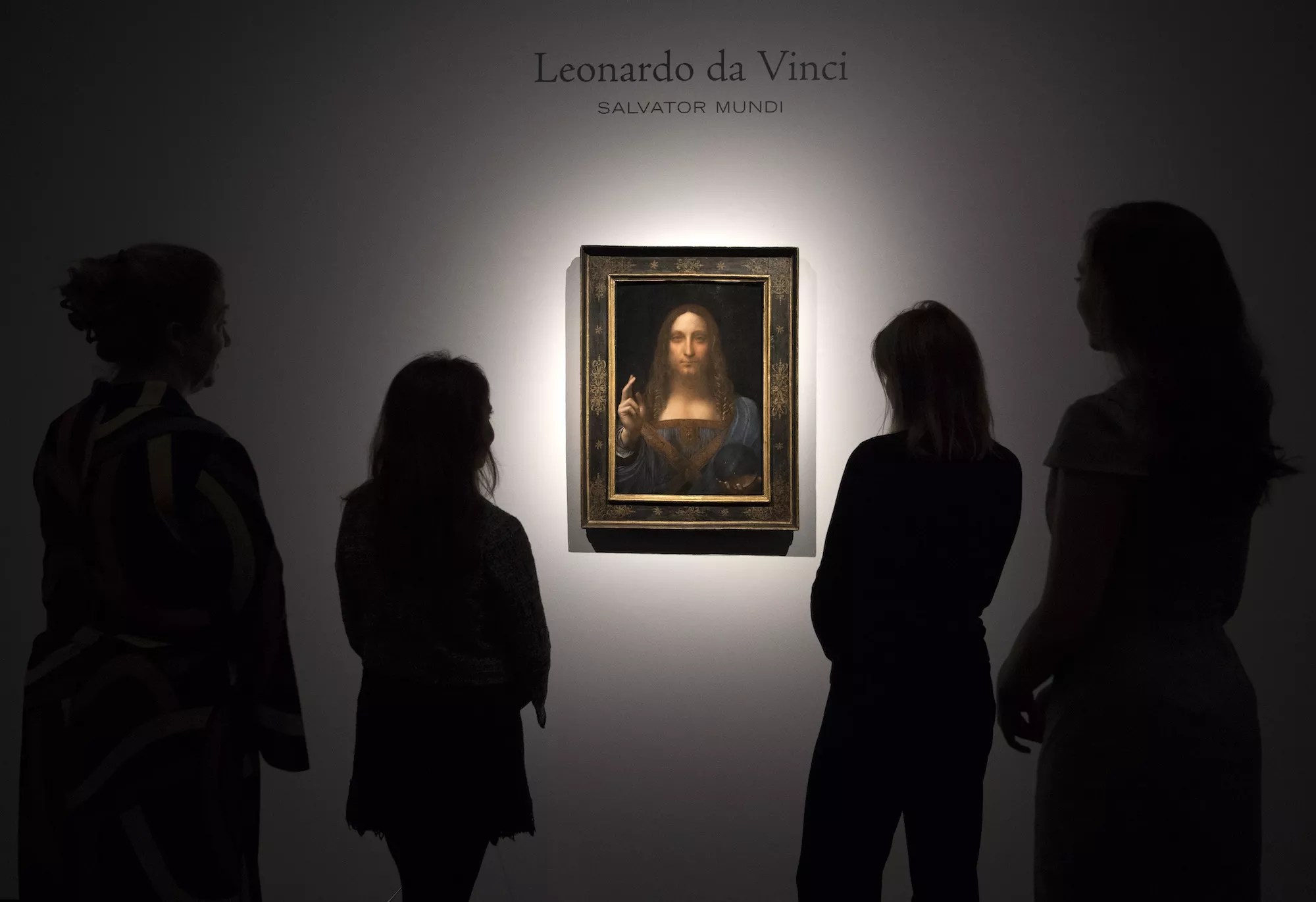
Christie’s Images Ltd. 2024

Audio By Carbonatix
This week, a unique art world event is coming to Miami.
From February 14 to 18, Paradise Plaza will host artworks by a raft of famous artists. Christie’s, one of the top art auctioneers in the world, is staging a special preview exhibition in the Design District ahead of an upcoming series of auctions. Art from three New York auctions happening in March – postwar to present, Latin American art, and contemporary edition – will be displayed. The works showcased in the preview include art by Damien Hirst, Jean-Michel Basquiat, Ed Ruscha, the Cuban Vanguardia, and the biggest highlight, a Fernando Botero painting expected to sell for between $1.2 and $1.8 million.
Both Christie’s and its competitor, Sotheby’s, regularly hold these pre-auction touring exhibitions in various cities to advertise the upcoming sales, which are held in major global art capitals such as New York and Hong Kong. According to Christie’s Miami director Jessica Katz, the fact that the company has chosen Miami as a location may speak to the growing clout of the city and its art-collecting class in the international art market. The auction house has kept an office in the city for many years, recently moving from Coconut Grove to the Design District.
“I think it’s a very exciting time in Miami. We have more galleries, more museums, more institutions, more art-centered events than ever,” Katz says. “I think, as a Miami native, I have watched that transition for a long time now. And I think that Miami has changed dramatically, more gradually than people realize. I don’t think that has happened in a flash. We have had great institutions that have strengthened their support and their program a lot, but they’ve been around for a while. And I think what’s helped is really just the infusion of energy and people from different places who bring different perspectives.”
Katz says the show is meant to give the public – and prospective customers – a chance to get up close and personal with the works on sale and demystify the somewhat imposing nature of art auctions, dramatized in films such as North by Northwest and Uncut Gems. (Christie’s itself was even featured in the first Sex and the City feature film.) To be sure, very few can afford to buy million-dollar masterpieces at a Christie’s auction. But they are technically public events – hypothetically, anyone can attend, and anyone can bid on the art, much of which is less expensive than one might expect.
“Somebody who knows nothing about art but just likes looking at it could walk in off the street and find something that they enjoy,” Katz says. “We really use this as an opportunity to preview a selection of highlights to people in Miami who aren’t necessarily going to New York for the sale or are and want a little bit of a sneak preview. And we really try and be mindful of the artworks we have on view. It’s really meant to be a cross-section of each respective auction, so it’s artists of all ages and all value levels. We’re going to be showing works that are estimated from $6,000 up to over a million dollars.”
Major auctions have also become more accessible for viewers – Sotheby’s and Christie’s both began streaming their sales during the pandemic. As the New York Times reported last year, millions of viewers, “riveted by how the one percent spends its money,” have started to watch the auctions, waiting for someone to drop seven or eight figures on a single Picasso or Rothko. In that sense, they’re also economic indicators, barometers of the overall health of the art market, as well as the worth of an individual artist’s work.

Leonardo da Vinci’s Salvator Mundi was auctioned by Christie’s in New York in 2017, breaking the record for the most expensive painting ever sold.
Photo by Carl Court/Getty Images
That’s also part of what makes auction houses somewhat controversial. Just as record stores deal in pre-owned music, Christie’s and Sotheby’s are essentially reselling art sourced from people who want to give up art they’ve already paid for once, in many cases, art that has appreciated in value over decades. As Katz says, “We’re operating on the secondary market. So we’re not really working directly with artists or showing new work directly from artists. So our approach as to how we sell and maintain clients is very different.”
Artists themselves are largely cut out of the process and make no money on secondary market sales, meaning that even if a painting of theirs sells for millions of dollars at auction, they won’t make a cent. Worse still, if an artwork by an individual artist sells for an artificially high amount – a practice known as “flipping” – it can inflate the prices of their other artworks, turning off potential primary-market buyers.
Ultimately, however, it’s not just these extenuating factors that make the show interesting. Nor is it just the pedigree of these paintings. It’s that depending on who the pieces are auctioned off to, they may not be seen publicly for a very long time. Art acquired at auctions can go into a museum collection or someone’s home, or it can simply disappear into storage. When Leonardo da Vinci’s Salvator Mundi broke the record for the most expensive painting ever sold at a 2017 Christie’s auction, for instance, the buyer, a proxy of Saudi Crown Prince Mohammad bin Salman, promptly spirited it away, and the location of the painting remains unknown.
So go see the show – you may never get another chance to see this art in person.
Christie’s Contemporary Highlights. Wednesday, February 14, through Sunday, February 18, at Paradise Plaza, 151 NE 41st St., Ste. 133, Miami; 305-445-1487; christies.com. Admission is free.